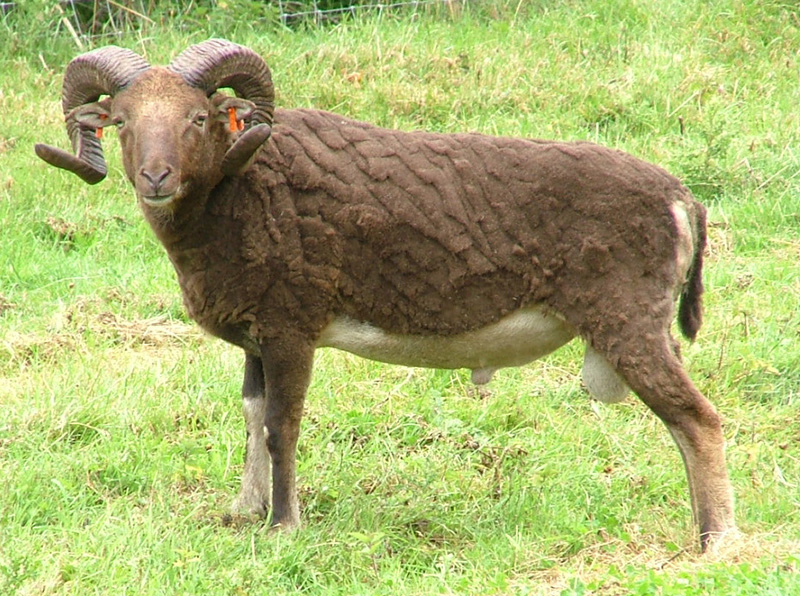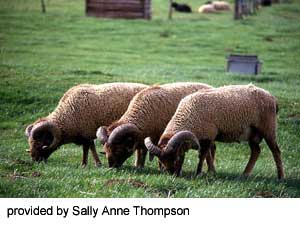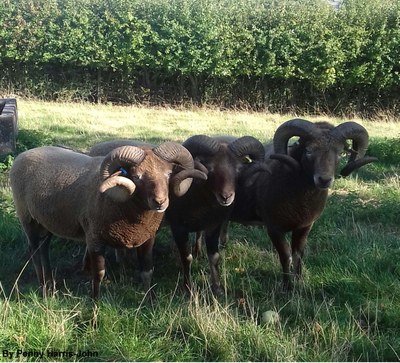Castlemilk Moorit Sheep
Also Known By: Castlemilk Shetland, Moorit Shetland
This is a critically rare breed. In 1985 there were 95 ewes and in 1989 about 120. The numbers are believed to have slightly increased since then.
The Castlemilk Moorit is a short-tailed primitive breed, created from the Soay, Manx, Shetland and probably wild Mouflon, and kept entirely for its ornamental appearance. It is a Scottish laird's decorative sheep, which can be kept without bounds by a normal 45-inch stock fence to grace the Home Park.
The breed was established by the Buchanan-Jardine family on their Castlemilk estate in Dunfriesshire more than a century ago. it is a long-legged, elegant beast, with light tan or reddish brown fleece of the color known in Shetland sheep as "moorit". It has a distinctive white-bellied, white-rumped Mouflon pattern. All the ewes have horns, turning back and out. Rams (always "tups" in Scotland) carry heavy spiraled horns.
The fleece is short and tight, tending to be dark brown next to the skin and lighter on the surface. It is clipped in most flocks, but will be cast in summer if not clipped. It makes good tweed, even undyed.
The Castlemilk Moorits, unlike the rival decorative sheep, the Park Soay, are comparatively docile and handle well. They go inside sheds rather than standing on top! They are extremely hardy, as their parentage would suggest, and live out all year round, on grass with supplementary hay only in prolonged snowy weather, and some compound feed just before lambing. They lamb without assistance (one lamb, sometimes twins). The wedders produce small joints of meat which is usually mistaken for venison.
The Castlemilk flock was sold in 1970 and only one tup and 10 ewes survived. This tiny foundation is the basis of all today's Castlemilk Moorits, so they are very closely related and uniform in type, although showing few of the detrimental effects of tight inbreeding.
References
Willy Newlands of Lauriston, Lauriston Castle, St. Cyrus, Kincardineshire DD10.0DJ, Scotland.
Mason, I.L. 1996. A World Dictionary of Livestock Breeds, Types and Varieties. Fourth Edition. C.A.B. International. 273 pp.



